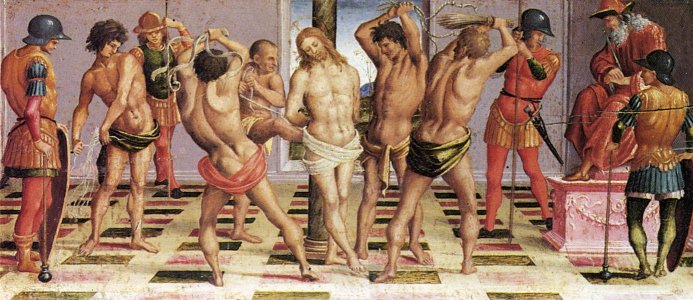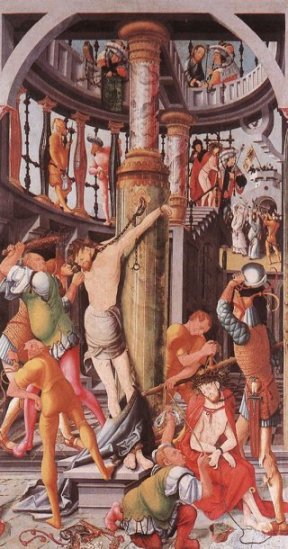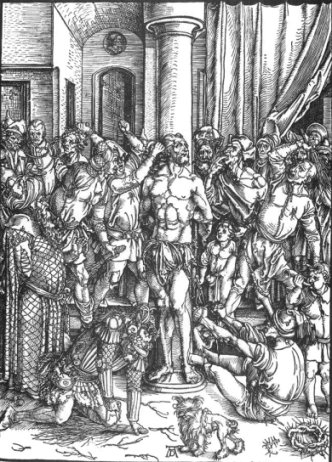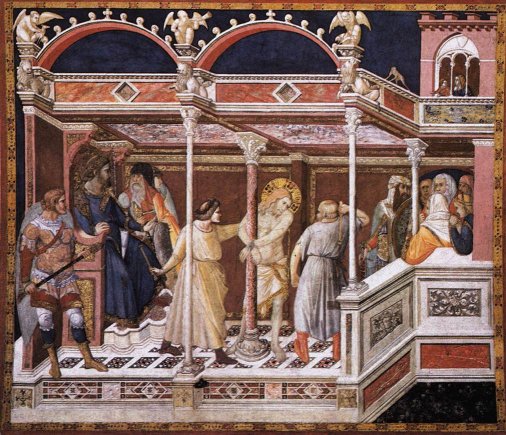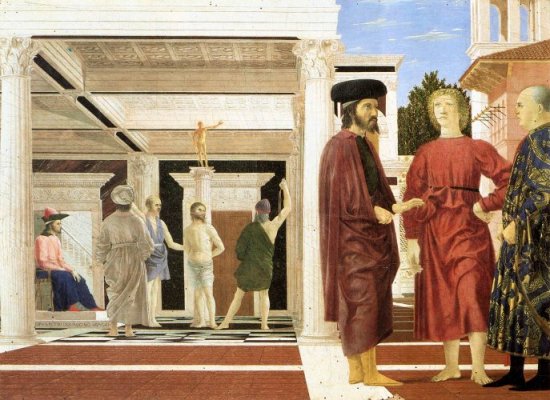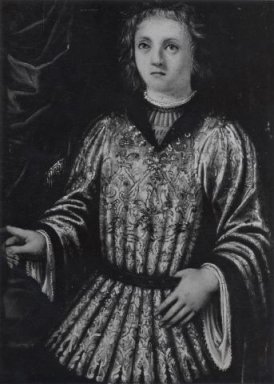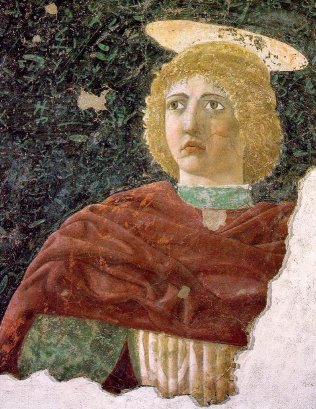|
The Passion of Christ |
|||
|
The Scourging of Christ |
|||
|
The scourging or flagellation of Christ as a precursor the crucifixion is mentioned briefly in three of the gospels - Matthew, Mark and John. Here's Matthew: Then released he Barabbas unto them: and when he had scourged Jesus, he delivered him to be crucified. (Ch. 27 v26) In Luke it is slightly different; here it is presented as a Pilate's alternative to crucifixion, rejected by the Jewish mob and the high priests: And Pilate, when he had called together the chief priests and the rulers and the people, Said unto them, Ye have brought this man unto me, as one that perverteth the people: and, behold, I, having examined him before you, have found no fault in this man touching those things whereof ye accuse him: No, nor yet Herod: for I sent you to him; and, lo, nothing worthy of death is done unto him. I will therefore chastise him, and release him. (For of necessity he must release one unto them at the feast.) And they cried out all at once, saying, Away with this man, and release unto us Barabbas: (Who for a certain sedition made in the city, and for murder, was cast into prison.) Pilate therefore, willing to release Jesus, spake again to them. But they cried, saying, Crucify him, crucify him. And he said unto them the third time, Why, what evil hath he done? I have found no cause of death in him: I will therefore chastise him, and let him go. And they were instant with loud voices, requiring that he might be crucified. And the voices of them and of the chief priests prevailed. And Pilate gave sentence that it should be as they required. (Ch 23 v13 - 24) In art, the scourging is a straightforward scene, until we reach Piero della Francesca, when, as we shall see, it is anything but. Apart from the scourging itself, the scene often includes Pilate observing, and sometimes Herod, high priests and others. |
|||
|
|
|||
|
|
|
|
|
|
|
|
||
| And so on to the much debated version by Piero della Francesco, still where it should be in the Palazzo Ducale in Urbino. | |||
|
|
|||
|
The scourging takes place on the left-hand side,
observed by two people, one with his back to us. Pilate and Herod? That's
the general though not uncontested view. The great puzzle is the
identity of the three characters in the foreground. Art historians have built careers on debating this. I'm not going to spend too long presenting the various ideas, which in fact don't take us any further in understanding the scourging itself, so just a few borrowed thoughts. The scene on the right is intended to represent a different time and place to the scourging itself. One indication of this is the direction of the light, which comes from the right in the left-hand scene and from the left in the scene on the right. The traditional view is that the central character is Oddantonio da Montefeltro, first Duke of Urbino. The other characters represent his advisers, Manfredo dei Pio and Tommaso di Guido dell'Agnello. All three were assassinated in 1444, and this view suggests that Oddantonio's death can be seen as a parallel to the death of Christ. Portraits of Oddantonio do show a marked resemblance: |
|||
|
|
|||
|
There are problems with this idea though. In
particular, the picture was commissioned by Frederico da Monefeltro,
Oddantonio's successor. Frederico was not a fan of the wastrel Oddantonio,
and had declared that he would do nothing to preserve his memory. Indeed,
it has been suggested that he was implicated in the assassination. Looking through Piero's work, I spotted this fresco (of St. Julian) in Sansepolcro. Isn't it that same face again? A favourite model, rather than a portrait? |
|||
|
|
|||
| So, what is going on here? Ideas include a suggestion that the painting is an allegory of the events in Constantinople, where the city was being besieged by the Ottomans, and the figures on the left are important Christian figures from there. I think that will do; there are plenty of theories on the web if you enjoy the sense of bewilderment. Wikipedia isn't a bad start. | |||
